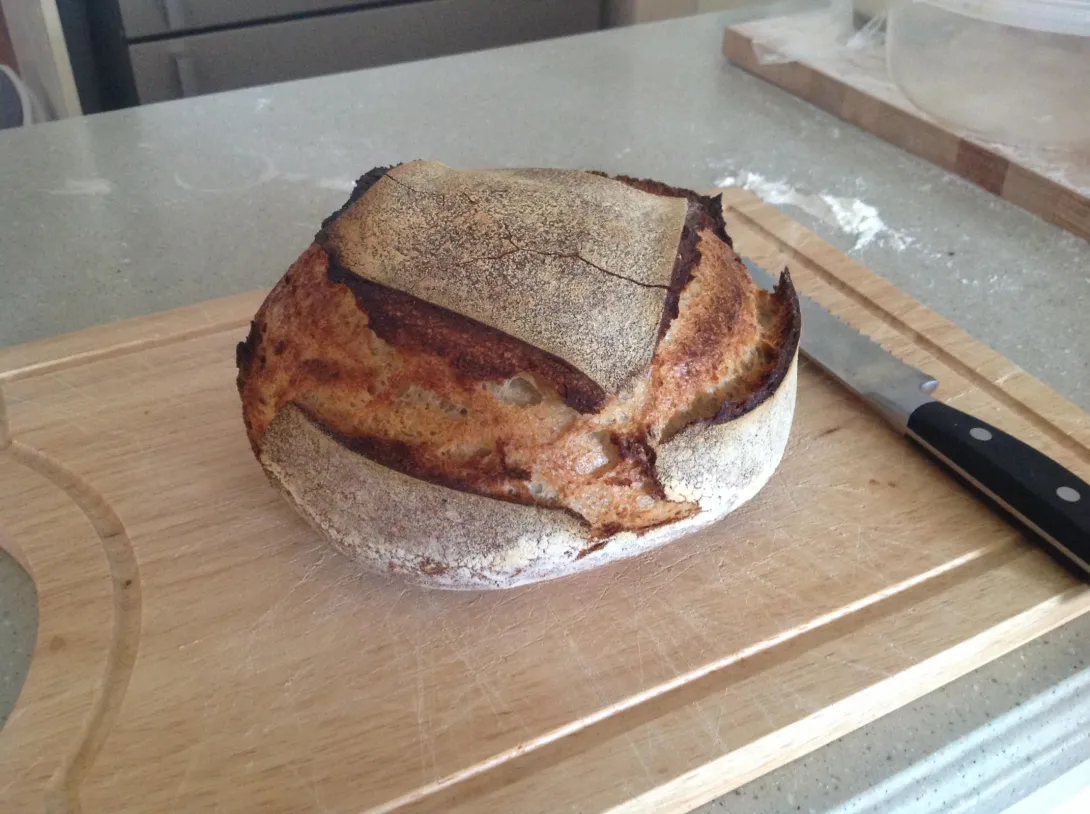
I've baked a few more loaves recently. I'm still having a bit of trouble deciding when they're properly proofed. All of these are from Hamelman's 'Bread'. I used a Dutch Oven for all the boules.
The image above is from about a week ago, a Vermont Sourdough. This wasn't a bad loaf, really. It tasted good and the crust was nice and crisp. The crumb was fine, fairly light and slightly chewy, but not very open. This bread was retarded overnight before baking, and it may have been slightly under-proofed as it didn't seem to have risen much. I only gave it about 8-9 hours. It still bounced back when gently poked. Crumb shown below:
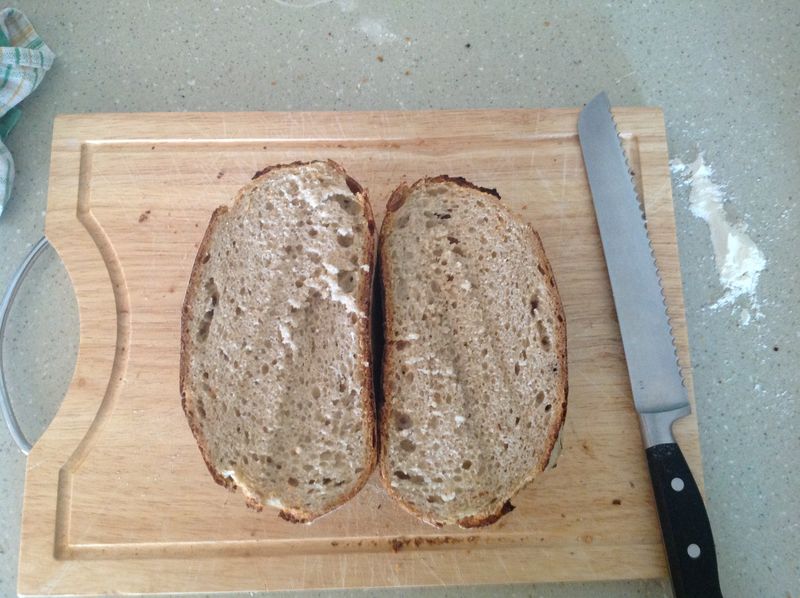
Same loaf sliced up:
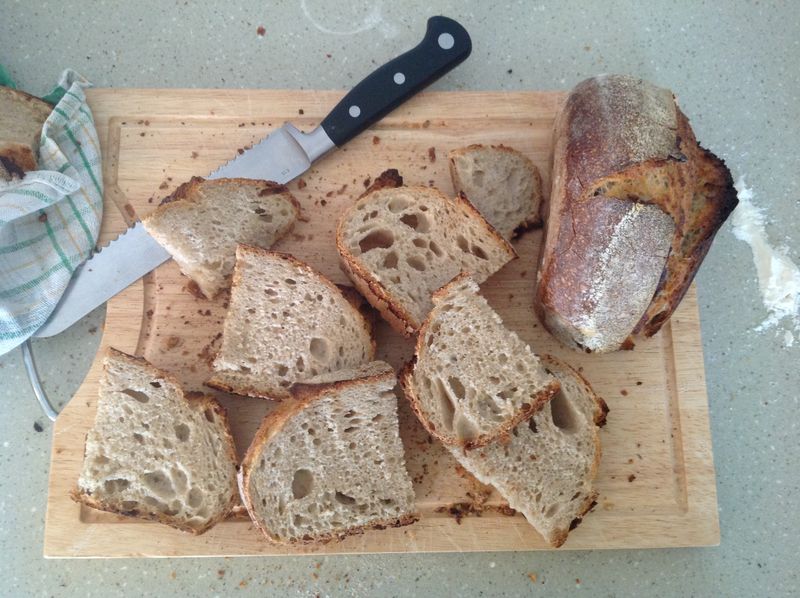
I also made a Sourdough Seed Bread. The dough felt quite firm and heavy during bulk fermentation, almost like playdough. It certainly wasn't loose or extensible, and resisted folds during shaping. I suppose the seeds absorb a lot of moisture and provide structure. This also was retarded overnight, and didn't seem to have risen much. I didn't have time to let it rest any longer at room temperature. It ended up a bit dense for my liking, but tasted quite nice. Picture below:
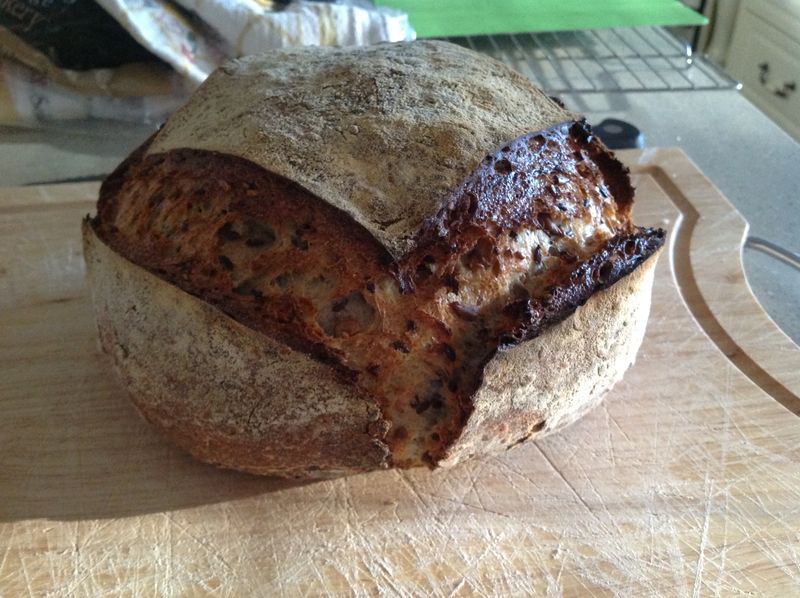
Crumb shot:
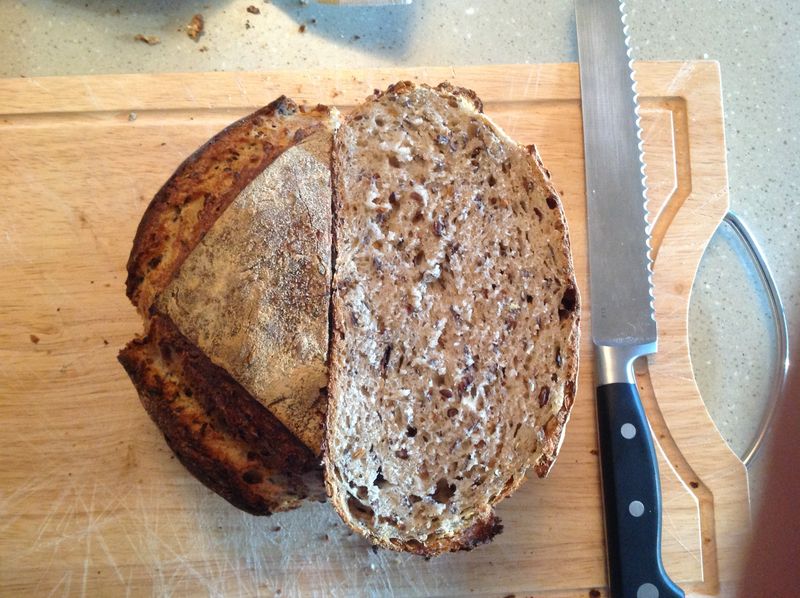
I made a Roasted Garlic Levain a few days ago. It was retarded for the full 18 hrs, and while the crumb was not very open, it was light and moist and the crust was crisp. I used a bit less garlic than the recipe called for as that was all I had, but the flavour was very good. I'll probably try this one again soon. Picture below:
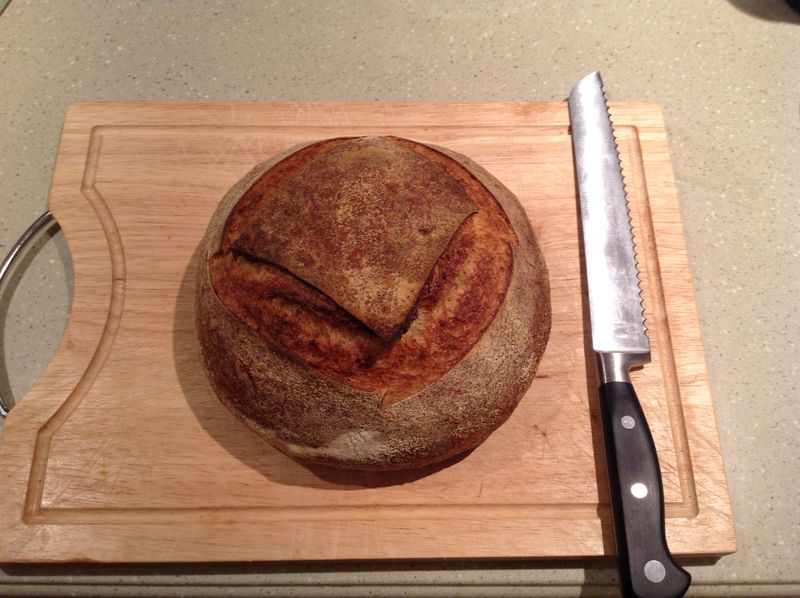
Crumb shot:
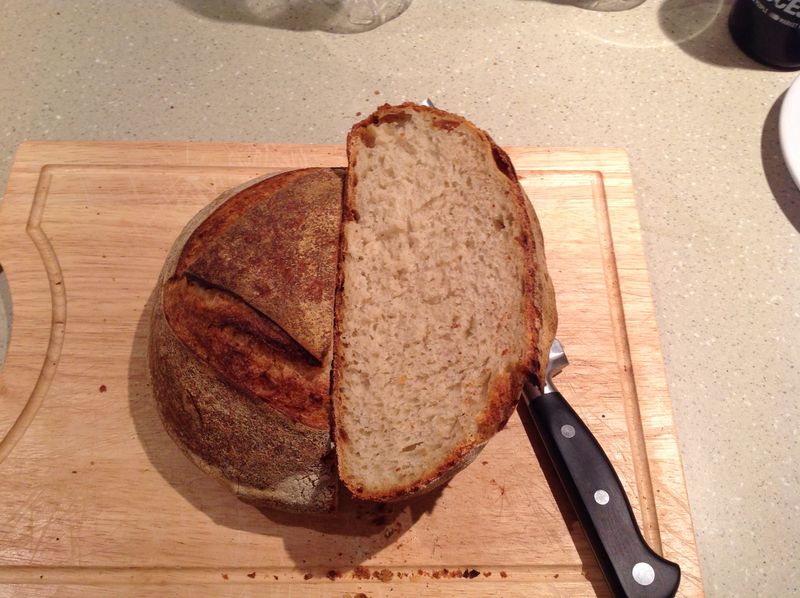
Sliced up:
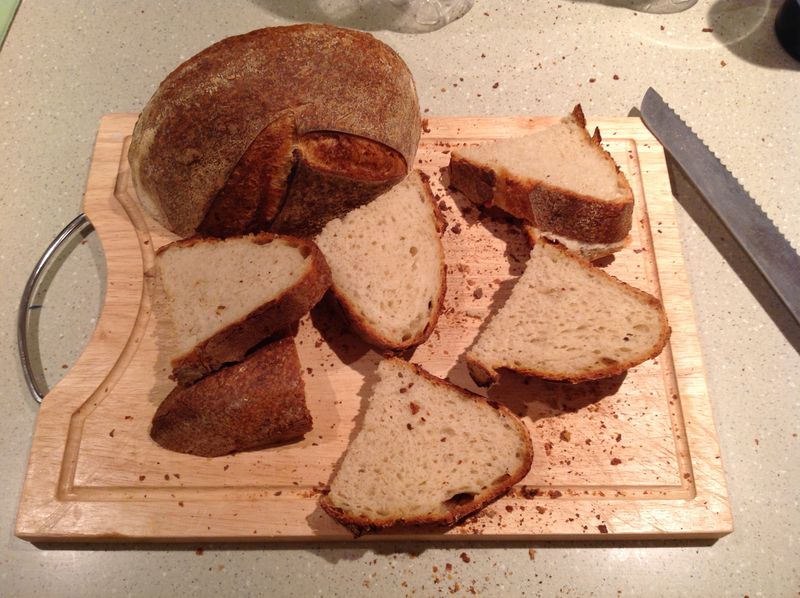
Today's loaf was a French Bread with Poolish from Hamelman's 'Bread'. It turned out a bit bland and lacking in character. I made myself take pictures even though I didn't feel like it, so I can try to improve it. It had almost doubled during bulk fermenation (2.5 hrs) and was full of air bubbles during shaping. I tried to avoid degassing it much. I deliberately proofed it as long as I dared, to see if I had been underproving previous loaves. This was done at room temperature, rather than overnight in the fridge, for just under 2 hrs at 24-25c (recipe said 1-1.5 hrs). I used the poke test regularly and the dough was still bouncing back right to the end - albeit a bit more slowly and not quite as fully as after being shaped. It looked fairly well expanded and felt light, but didn't seem to be near the point of collapsing. I was hoping to see a light, open crumb, instead it was dense and dull. Oh well. Also I used way too much flour in the banneton because I was using it without the liner for the first time in a while. The loaf was coated in it. Pictures (after brushing off much of the flour):
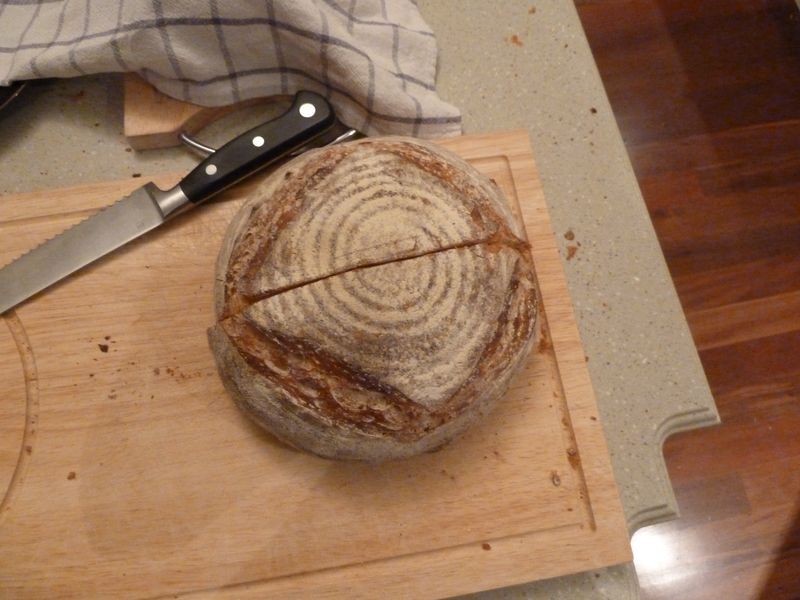
Crumb:
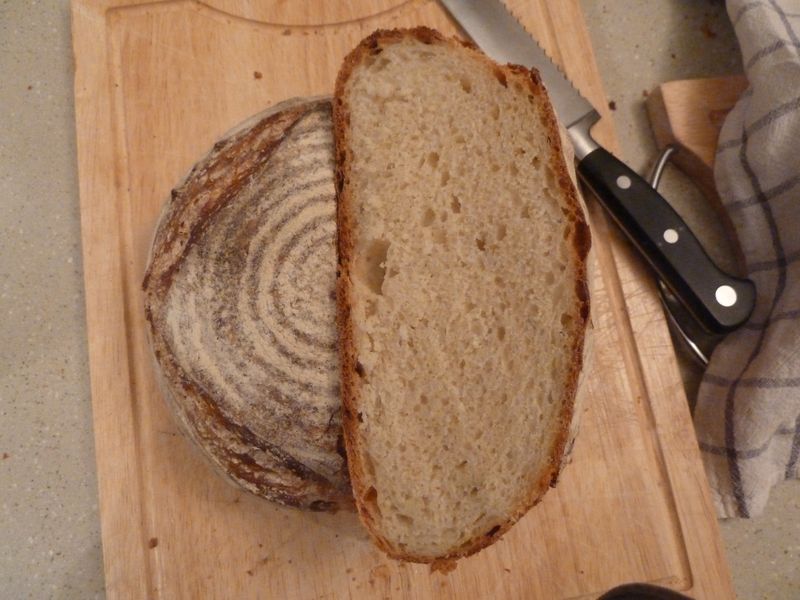
Sliced:
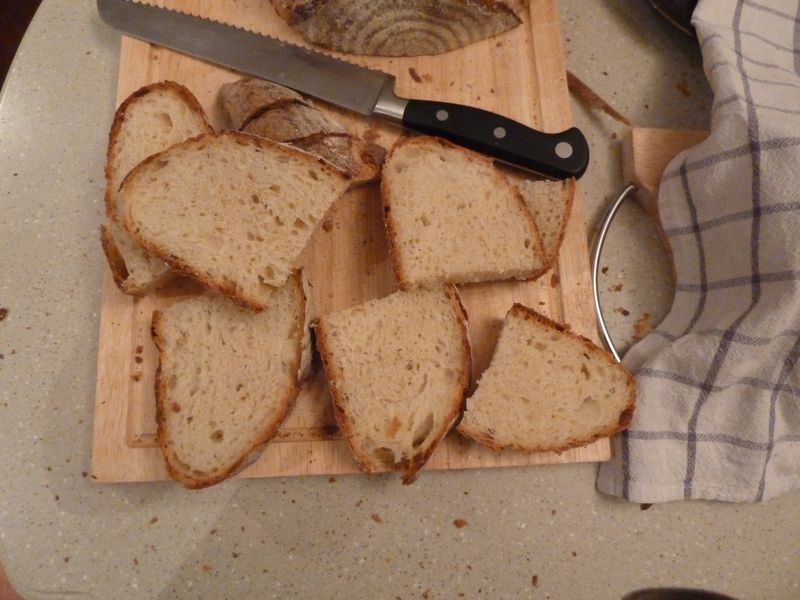
On the plus side, I made some awesome pizzas the other night (also from Hamelman, though I skipped the Biga and reduced the yeast for a longer bulk fermentation instead).

I also made some great burger buns, from the King Arthur website (https://www.kingarthurflour.com/recipes/beautiful-burger-buns-recipe). I've made these many times and they are always delicious, and mostly foolproof. I just make sure to steam the oven well otherwise they get crusty and split open instead of being lovely and soft. I forgot to put sesame seeds on this time, only realising when they were already in the oven.

I'm still dwelling on the disappointing French Bread. My plan now is to repeat it a few times and see if I can get to grips with it properly, trying to alter a variable at a time. The simplest breads are supposedly the hardest to get right, and I'm determined to improve. If anyone has any advice, I'll gladly take it.
-Simon
- Simon280586's Blog
- Log in or register to post comments
Don't see what's wrong with the French other than perhaps... flavour? The crumbs all look wonderful!
Mini
Thanks, I really appreciate that. I tend to be quite critical of the breads I make because I always want to improve. I've been happy with most breads I've made recently, it's just this most recent one that was a bit lacking. It didn't spring as much in the oven, the crust wasn't quite as crisp (could have been baked a bit longer/hotter I think), and the crumb didn't have the light and moist quality I look for. The flavour wasn't bad but for me a lot of the enjoyment comes from the texture of the bread.
I'm still trying to get a feel for when the bread is ready to bake. I might also try to adjust the hydration a bit because I'm using Australian flour which may differ in some respects from American flours (it also doesn't have any diastatic malt or amylase enzymes in it, as far as I know).
I agree with Mini. I think your breads look great. Perhaps your Vermont Sourdough is a little on the under proofed side. I can tell from how much your slashes have opened in the oven. Ideally, I wouldn't want them to open that much so I would have let it proof a little longer. However, I don't see anything wrong with your crumb structure. I made Vermont Sourdough recently and your crumb result was pretty similar to mine. I must admit, though, I was somewhat underwhelmed with the flavour, even after an overnight retard in the fridge.
If you feel your flour needs diastatic malt and you want to experiment, you can always make some yourself. There is a thread on it somewhere that I can dig up if you are interested. I make my own using sprouted barley and add it to quite a few of my breads.
Best,
Syd
Thanks! I'll bear in mind your comment about the slashes. Also, I actually do have some diastatic malt (ordered from overseas), but I still need to fine-tune the amount I use because sometimes I get a slightly gummy crumb, so recently I've been omitting it. It's another variable to think about.